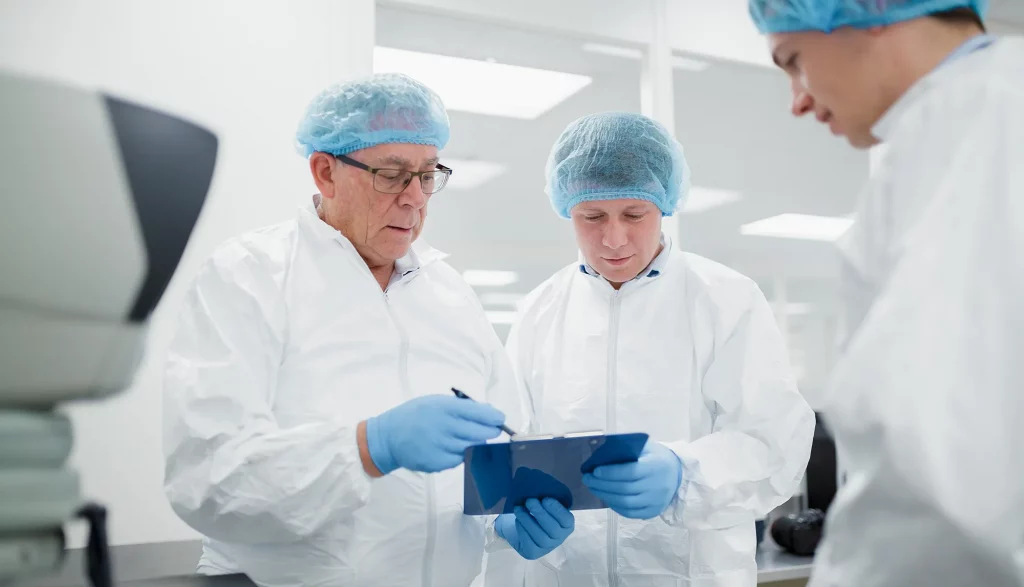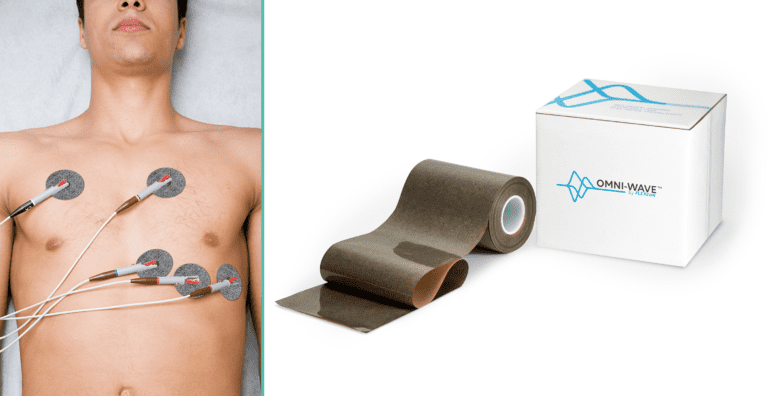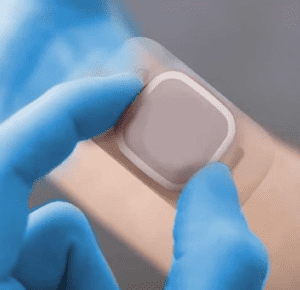The manufacturing process for electro-based medical devices such as ECG patches, electrodes and flexible printed circuitry requires a thorough understanding of the device, layers and its components. The selection of materials and components plays an essential role in the functionality of a device.
PolarSeal combines the role of human expertise with automation into the manufacturing process, allowing high-volume manufacture within short time frames as well as a highly-skilled team ensuring only quality components and devices are utilized.
PolarSeal and FLEXcon explore the end-to-end solutions from high-performance materials through to quality part manufacture. We explore the properties of devices, quality assurance and testing, the materials, and the factors to consider.
What properties should be considered for Electro-Medical devices?
Electromedical devices are designed to perform specific functions, such as monitoring heart rate or stimulating muscles. The materials used in these devices must be able to withstand the demands of these functions.
Electromedical devices must be safe for use on human tissue. They should not cause harm, allergic reactions, or infections in patients.
The materials used in these devices should be compatible with the human body and not result in negative reactions or complications.
The importance of Quality Control and Testing
Quality control and testing help ensure that your electro-medical device meets the highest industry standards.
Functional Testing:
Functional testing confirms that the device functions according to its specifications. An example is electrical safety testing that ensures the safety of the device during its operation.
Environmental Testing:
Environmental testing checks the product’s durability in various conditions like temperature and humidity. Environmental testing can also help identify the potential failure of a device in harsh environments.

Material selection for optimal performance
The partnership between PolarSeal Tapes & Conversions and FLEXcon provides the perfect material, adhesive, and converting solution. Selecting the optimal material is crucial for performance. A revolutionary medical adhesive transfer tape material called OMNI-WAVE™ becomes the most recognized option for hyper-conductive and hydrogel-free requirements.
FLEXcon® OMNI-WAVE™ is a disruptive healthcare innovation that yields substantial cost savings for medical electrode and device manufacturers, and provides a better overall experience for patients. This revolutionary biosensing technology was developed with patient comfort in mind. It has been awarded more than 100 patents worldwide and is ready to change the medical electrode paradigm.
OMNI-WAVE™ utilizes a skin-friendly, medical-grade conductive adhesive which eliminates hydrogel-related skin reactions for patients who are sensitive to hydrogel. Furthermore, because OMNI-WAVE™ is not moisture dependent, it does not require expensive barrier packaging like hydrogel components, and it affords a two-year out-of-pack life, providing cost savings to both manufacturers and end-users.
OMNI-WAVE™ combines unique capacitive and resistive materials to achieve optimal biosignal sensing for a variety of diagnostic and therapeutic device needs. Independent clinical studies have shown the performance of OMNI-WAVE™ to be equivalent to hydrogel-based devices.
“This is a disruptive technology that will enable medical device manufacturers to differentiate their product offering without sacrificing performance while providing an improved experience for patients with hydrogel allergies,” says Kelly Johnson, Product Manager – Healthcare, FLEXcon. “Elimination of expensive barrier packaging as well as three to six times longer out-of-pack life are added bonuses.”
FLEXcon is actively partnering with large medical device and electrode companies to replace hydrogels in their bio-signaling applications. FLEXcon® OMNI-WAVE™ technology passes ISO 10993-10 for sensitization and irritation and is AAMI, RoHS and REACH compliant. It is an approved component in customer 510(k) and CE marked finished good medical devices and is now shipping worldwide.

Factors to consider during material selection
Material selection is an important aspect of the design and development of electro-medical devices. The material must be biocompatible and durable while also considering the cost and functionality of the device. Biocompatibility testing is carried out to ensure compatibility with human tissue. There are several commonly used materials in the manufacture of electro-medical devices, including Polyethylene and silicone.
- Function – The device’s intended function is a key factor in material selection.
- Biocompatibility – The material must be biocompatible to avoid adverse reactions and harm to patients.
- Cost – The cost of the material should be factored into the selection process as electro-medical devices can be expensive.
- Durability – The material used must have good durability to withstand the demands of the device’s intended function.








